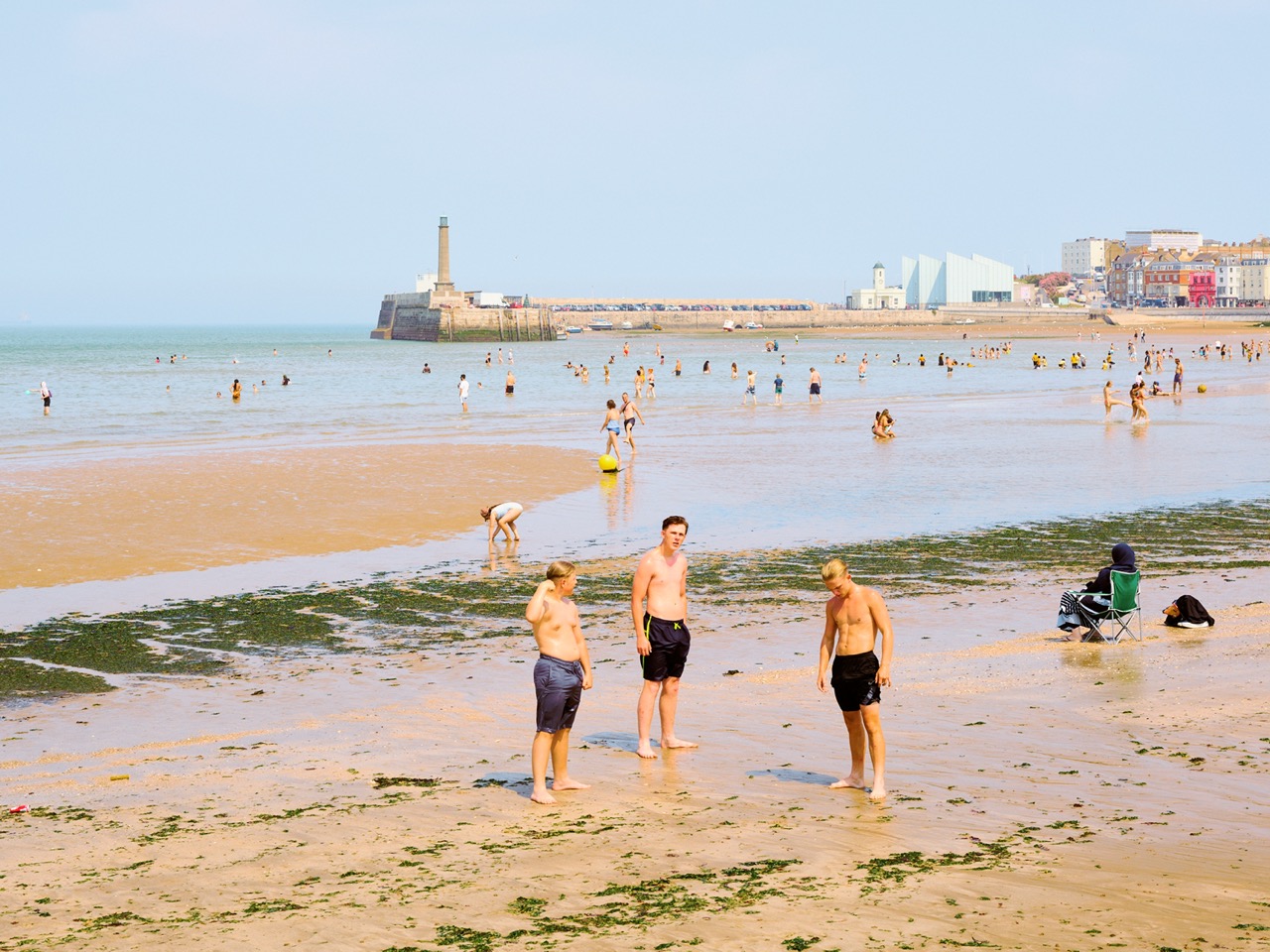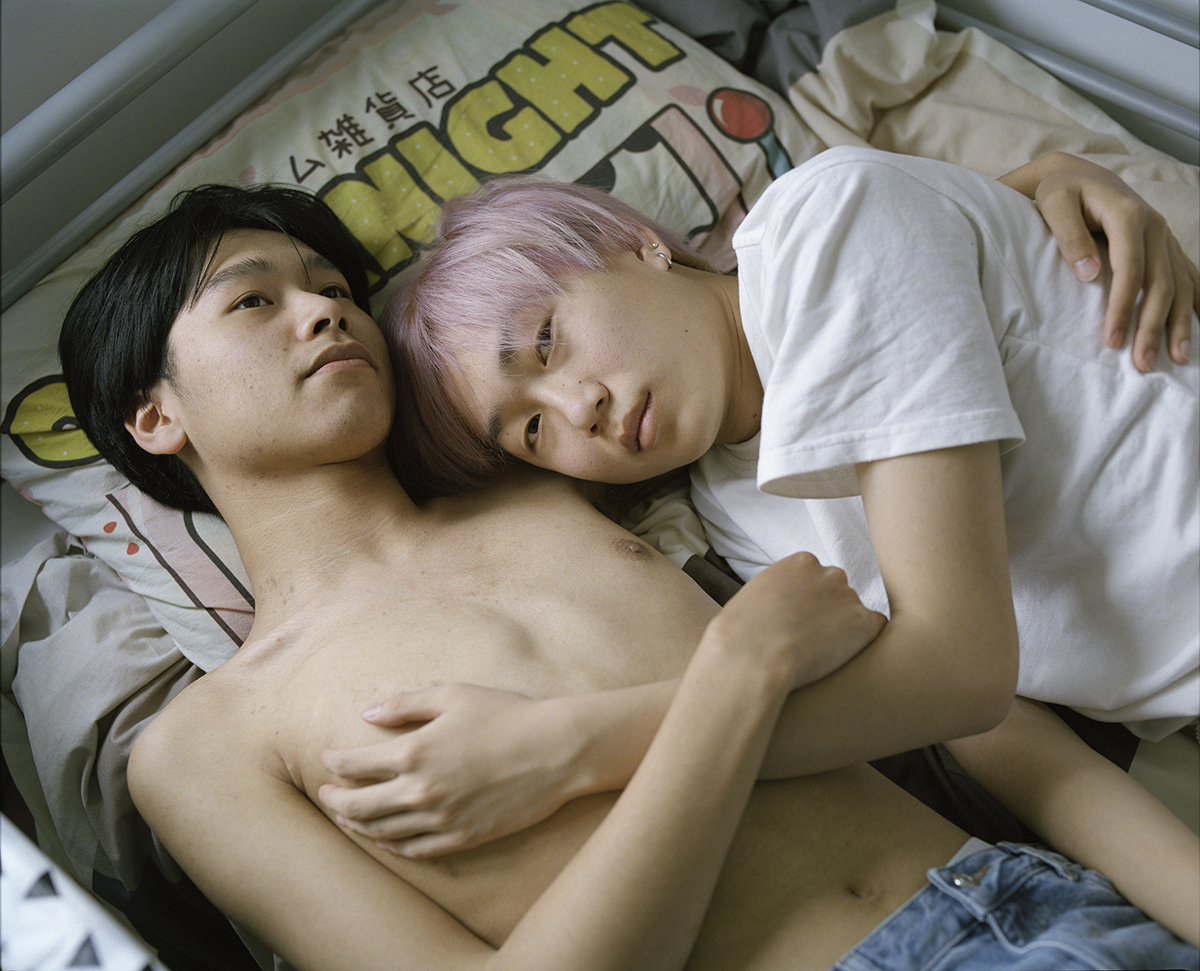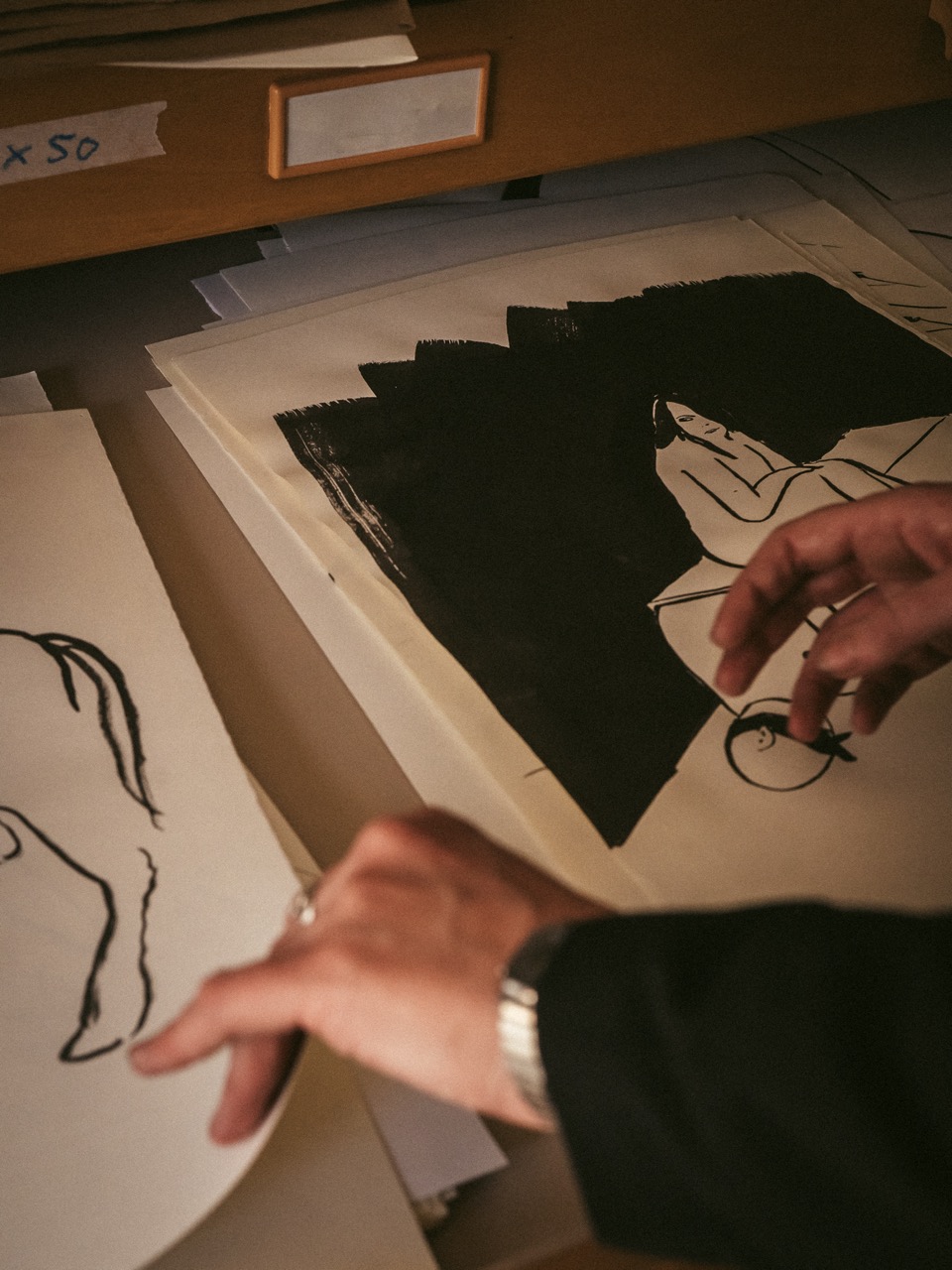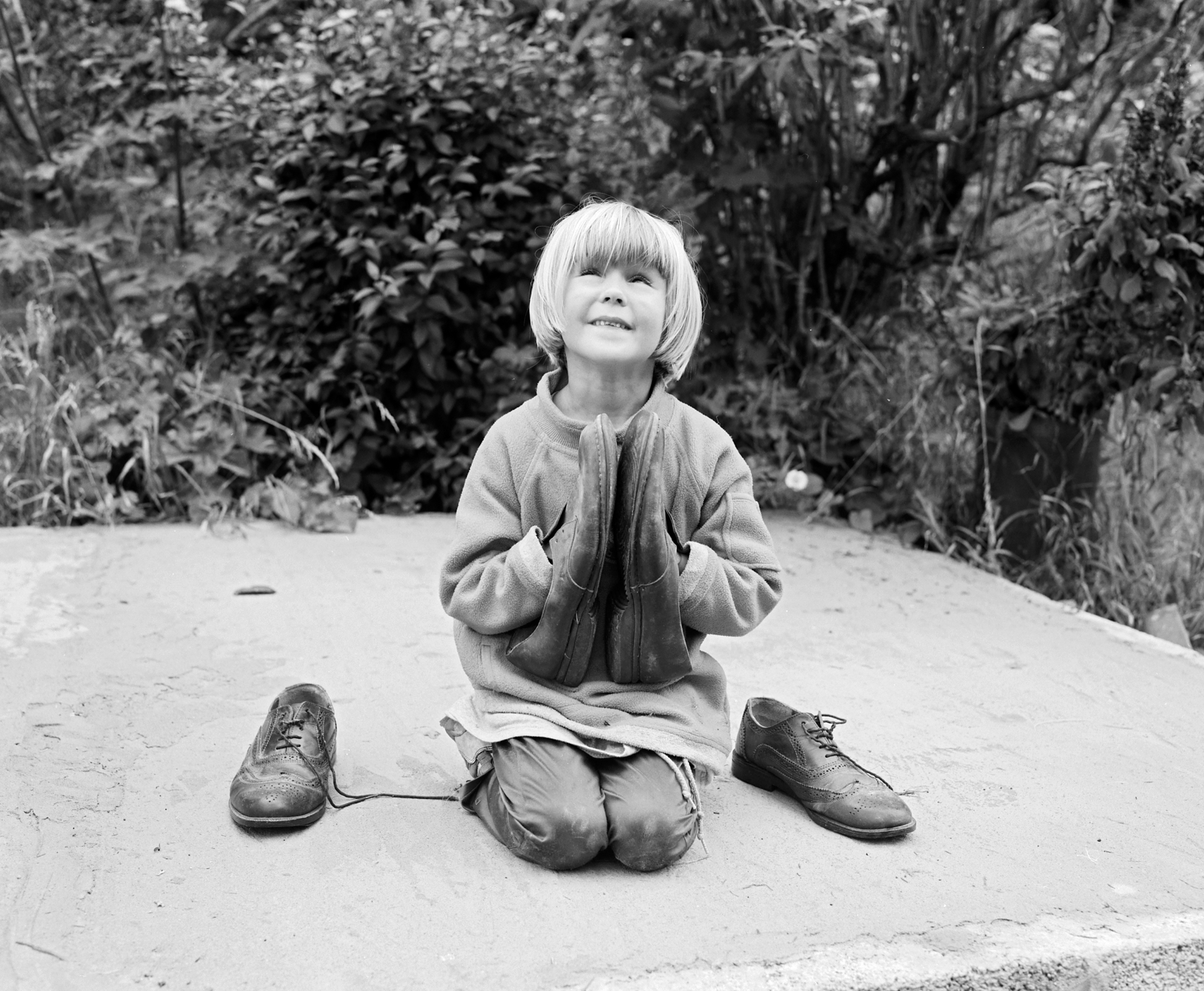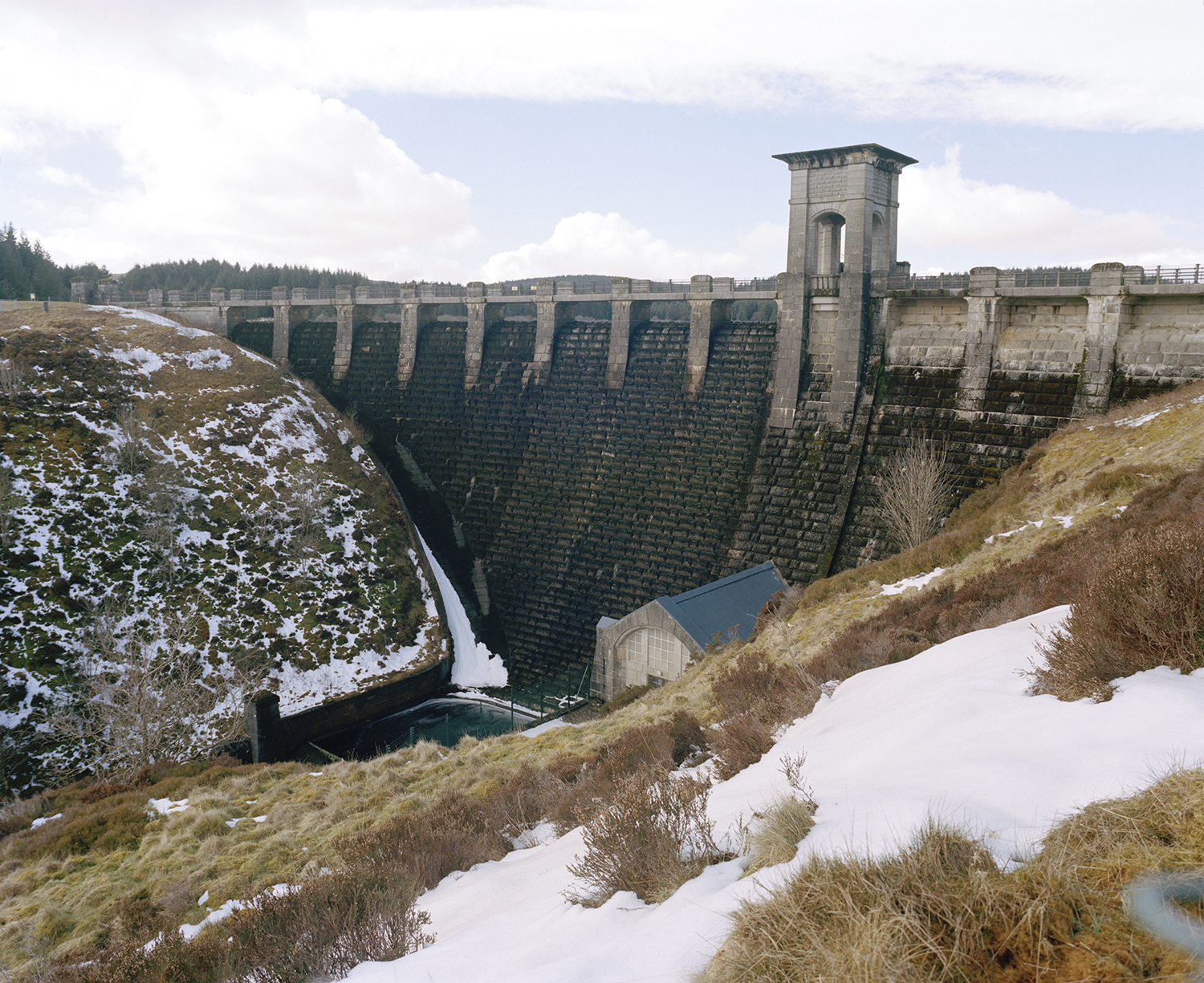New Brighton Revisited Exhibition, the group show bringing together for the first time pictures of internationally renowned British photographers Martin Parr, Ken Grant and Tom Wood. The images shown in the town from which the pictures stemmed, this innovative exhibition recorded 3 decades of New Brighton through the eyes of the 3 photographers as they lived and worked in the town. This fantastic exhibition would not have happened if it wasn’t for one person, the truly inspirational Tracy Marshall Founder of Northern Narratives, we caught up with Tracy to discuss the exhibition, experience of arts education and much, much more. We would like to give a special thank you to Tracy Marshall for all the work that she has done to create and support so much for photography within North West.
To start things off, how would you describe what you do to those that don’t know and tell me a little about what brought you to be involved in the arts? Did you grow up around it or was it something later in life?
I am the Director of a number of arts organisations both freelance and in full-time employment. I’m currently Director of Development and Partnerships at Open Eye Gallery in Liverpool and have been in that post since February. It’s an amazingly varied and diverse post covering all development nationally and internationally for Open Eye. It also incorporates leading the rebranding and relaunching of LOOK which was an independent photography festival based in Liverpool which has now become a key part of the Open Eye Portfolio and which will be focused on international exchanges around photography with China and other non-western countries. It’s an exciting opportunity and I am bringing some amazingly exciting exhibitions, artists, events and exchanges to China and from China back to the North West.
Sitting alongside this full-time post I Co-direct and run an organisation called Northern Narratives with my partner, photographer and academic Ken Grant. We set this up a year ago to run small-scale photography initiatives focused on what we enjoyed in photography and what we felt we wanted to do and experience with it as a medium. We have a number of projects running at the minute, the most well known is the New Brighton Revisited exhibition which featured Ken’s work from New Brighton alongside that of Tom Wood and Martin Parr. All three of them worked and lived in the town over three decades and made their early pictures there. No one has shown them all together before and in the town itself. So I decided to do that and the show is now a large show of both well known and unpublished work by each from the town. It’s an immense project and has been an amazing experience and one I will probably miss after it closes at the end of August. I’ll start working on the next big project then – my difficult second album moment I imagine.
Prior to this role I was the Director of a photography gallery of a similar type to Open Eye in Belfast and while there for 4 years developed a series of programmes around emerging photographers working in or from Northern Ireland, commissioned and programmed diverse and innovative exhibitions and began the restoration of a large photographic archive of the NI ‘troubles’. This role is how I entered photography but prior to this, I had also worked in the arts at a senior level in a development directorship of an NI orchestra.
My background as a young person at university was also in the arts with a focus on history and humanities in my original degree and an emphasis on moving image and film towards the end of my academic life – a thesis on British film and its depictions of post-war family values being my last work academically. So the arts In many forms has been part of my life for a long time.
I ended up leaving it for work in the voluntary sector writing and directing campaigns, development projects and fundraising initiatives for a number of health and welfare charities. Predominantly those addressing homelessness and this kept me out of the arts for around 10 years.
Tell me about your own experience in education?
I had a varied experience of education. In Northern Ireland education during my childhood growing up in the late 1970s and 1980s was a strange space dominated largely by segregated schools – by religious affiliations and political leanings. As a result I ended up in a school system that was trying hard not to be impacted by this way of being but with teaching ( especially in the arts subjects) very subjective despite this and subjects like history taught in very subjective ways dependent on the background of the school system – a Catholic maintained school or an NI state school. As a result, I learnt early that the history I was taught in my school was very different from the history of those from my peer group in schools dominated by the opposite side of the religious/political situation. It made me question everything and made me very searching for art and cultural work, drilling down into the reasons and inspirations and sources behind every writer, poet, artist, photographer or musician in Ireland and beyond – what were their principles, values and beliefs way beyond the creation of the particular work I was studying – I call it my obsession with context. I still hold that today- everything needs context for me to enjoy it and to appreciate it should it be music or an image on a screen or a photograph.
Beyond this element of my education, I took a different route into third level education. Having had a baby at 18 in my first year at ‘conventional’ university I decided to go down the Open University route to complete my degree and be able to juggle young ( and very unexpected) motherhood and earning a living. I found this system ( at that time – this was the early 1990s. It may be very different now) to be inspired. It allowed me to meet mature adults whose lives were varied and complex and who were driven and self-motivated to be there rather than having just taken the natural next steps post grammar school. It opened my eyes to other people and their lives and their motivations and also instilled in me the self-motivation and self-starting mentality I still have today and which largely drives me into projects such as the large freelance ones I undertake with Northern Narratives alongside a full-time job.
I have a desire to do a PhD at the minute – on photography and social reflection and change I think- and am pulling together in my mind how that could or might look. Early days in that yet. I keep meeting so many photographers whose work I want to be consumed by or whose motivation I am fascinated by, drawing it back to a proposal will be a challenge.
I’m finding a sense of interconnection with a subject the key thing now that’s making the difference with people I meet and see and who bring me their portfolios to look at.
Let’s talk a little about your ideas around photography, social reflection and change. I think we are at a crucial point within the photosphere where this topic is now more important than ever, and in many ways, these ideas are crucial for new and upcoming photographers?
I agree. A sense of knowing what the potential is of your practice, your photography and your placement of it in the public sphere is important now. In a way, it always has been but more so now with the technology we have to retain and disseminate so much and so widely. It’s important the responsibility around an image is grasped with that in mind for the new generations of photographers. There are so many courses now offering photography and so many graduates emerging with great skill it’s the things around the practice that will make the difference for the newer generation emerging now and in coming years. I’m finding a sense of interconnection with a subject the key thing now that’s making the difference with people I meet and see and who bring me their portfolios to look at – they have connected not just with an interesting subject but also with its heart and soul. This might be with a community, a family, an area, a landscape, a current or past issue or a theme. They connect with it and know their role alongside it and capturing it can be impactful. That’s where there is a real importance now with Photography. It is around us so much that the impact of a photograph can be immense and it’s longevity of impact even more so.
You have worked across Ireland and the UK as communication and fundraising director for a number of health and social welfare charities. Could you tell me a bit about this and has it had a lasting effect on the way you work now?
This has had a massive effect on me. It dominates entirely why I do what I do and the way I do it. Working in the social welfare sector particularly shows you just how harsh the world is and can be for some people. It drives a lot of the projects in the arts I’ve created or enhanced or refocused. The need to make things just a bit less challenging for people where you can. I can’t change the world with photography or music but I can create ways in my work where access to them and introductions or support to be part of them can be made possible. In the orchestra this showed itself as building stronger education and outreach projects and in photography, it is about the creation of partnerships with individuals and groups working in the community with young people, the elderly, those experiencing health issues or working in a way generally which opens up access routes in various ways to the arts.
I think there is more need now for photographers to see a socially engaged way of working as not just something to do to pass the time while they wait for a big commercial commission.
It’s interesting that you mention access to your work, working in partnerships and communities. From my own experiences and from what I have seen, there is a culture in higher education that tends to focus on the individual rather than the collective and it’s so important that we maintain and push this concept of partnerships and collaboration within communities. What have been some of the most interesting ways of achieving this you have seen, and how do you think that upcoming photographers can move toward these goals?
I think there are some real key examples of how this has been done without great strategic direction for years – Ken Grant springing to mind with my work alongside him at the minute. His work around football fans and in Birkenhead connected for years routinely over and over with the same people, their daily and weekly routines and lives and the photographs reflect that interconnection and integration around the community and the people. Then there are people like Anthony Luvera and his project in Belfast around homelessness which set out with Luvera embedding himself in the charity and taking on a voluntary role. His work reflects las photographically that embedding and the pictures are made together with the residents and clients of the charity. I think there is more need now for photographers to see a socially engaged way of working as not just something to do to pass the time while they wait for a big commercial commission, which I have seen being the case with some photographers in the past, but for it to be a key way of making pictures. It’s documentation and creativity and social engagement in one rounded way of working. It’s matched with empathy and a value system too which I’ve found most photographers have to a great extent. There are some new courses opening up as MFA and MAs now on this way of working for Photography – I’m aware of a new one in Salford and in Coventry and both taught by experienced practitioners of socially engaged practice and I think that’s going to make more photographers work naturally in this way and create some very exciting projects.
During your time in Belfast you took a lot of young photographers into international festivals and public realm exhibitions. Tell me about the work you were doing and a little about these exhibitions?
This stemmed from a discussion with the Head of photography at the local university who pointed out that no real opportunities existed for young photographers coming out of NI. I designed with the curator at the time, a programme which opened up a new gallery space and a year-long mentorship and development project with us for 6 emerging photographers. They were supported developing their practice and in producing a show which opened alongside that of the internationally renowned photographers showing in the main gallery space at the same time. This was an immense success and we gained significant plaudits for this work and were asked to exhibit their work in Paris Photo, Unseen in Amsterdam and Photo London. This continued annually while I was in that post and resulted in around 21 young photographers getting a springboard and a platform to start their careers. Many had books and further international exhibitions after moving on from this programme.
What do you look for in emerging photographers, what is it that catches your eye the most?
Oh, this is an interesting question as it really has no set template and is very changeable. The key thing for me is a passion for their pictures and an ability to translate that passion to me as they talk. If you feel your work and can communicate that you are definitely going to get to a second minute with me and my ability to listen to you. The next is a lack of arrogance about it and a sense of humility about the work and themselves. There is nothing quite so off-putting to me as someone who feels they are doing you a massive favour by showing you their work. It’s a two way sense of respect for each other and knowing that at the offset makes it a wonderful experience for both when someone shows their work for the first time. The pictures and their skill and quality and creativity and depth is obviously also a major thing but the first two points are the real ones for me. I once had a guy present me some amazing pictures but hand me an A4 page with a typed artists statement on it and then leave the room while I read it and looked at his work. It may surprise you I did neither for very long.
I’ve a few people come over my radar in recent years who’ve met each of these things head on and have been amazing to work with and work together on projects. One sticks in my mind particularly and it’s an Irish guy Robert Ellis. His work was beautiful. Personal and creative, skilled and beautiful and he could talk about it with passion and real dedication. We worked together for almost a year on some projects from Belfast to Photo London and he was a wonderful, generous and humble guy with the ability to talk and link with everyone who came to see him or his work. That’s what I would like to see more of when I meet new photographers.
So my advice is don’t feel because you are not the creative artist actually performing the art form you are involved in that you aren’t as vital as they are to the outcome of the production of great art and great projects.
Bringing together these leaders in photography for the New Brighton exhibition is not only inspiring for photographers, but for those looking to get involved in the arts such as yourself. You juggle multiple projects and jobs, creating amazing events and have a background that is both honest and inspiring, what advice do you have to those that are wanting to create change and join these art movements?
Come with a knowledge that you don’t have to be the artist to be good in the arts and be impactful. I worked initially outside it coming back to it in my 40s. The skills I’ve brought offer so much to the arts outside of taking pictures or playing an orchestral instrument and I think how that has been received is often mixed but more so now it’s respected and recognised for making big things happen and change happen. So my advice is don’t feel because you are not the creative artist actually performing the art form you are involved in that you aren’t as vital as they are to the outcome of the production of great art and great projects. Once I passed the apologetic phase that I couldn’t get up on stage and play a violin or I wasn’t painting masterpieces I saw my role and it’s significance with much more confidence. My advise to anyone entering the arts with additional skills is to ignore anyone who is sniffy with you in this world because you don’t do the art form itself- it’s often not long after a big project comes through, such as New Brighton, that they think you are great and want to be your next best friend. It’s very satisfying when that happens. In seriousness though without development skills, skills to run things proactively and like a business, the ability to think and brand and market in a way that gets artists work out there the current world for artists is very tricky and people like me coming into the arts bringing skills from outside it free artists up to create, perform and make work without having necessarily to focus on those elements themselves. ( and to be honest I do take an ok photograph as well- see portrait in BJP July edition of Ken Grant)

